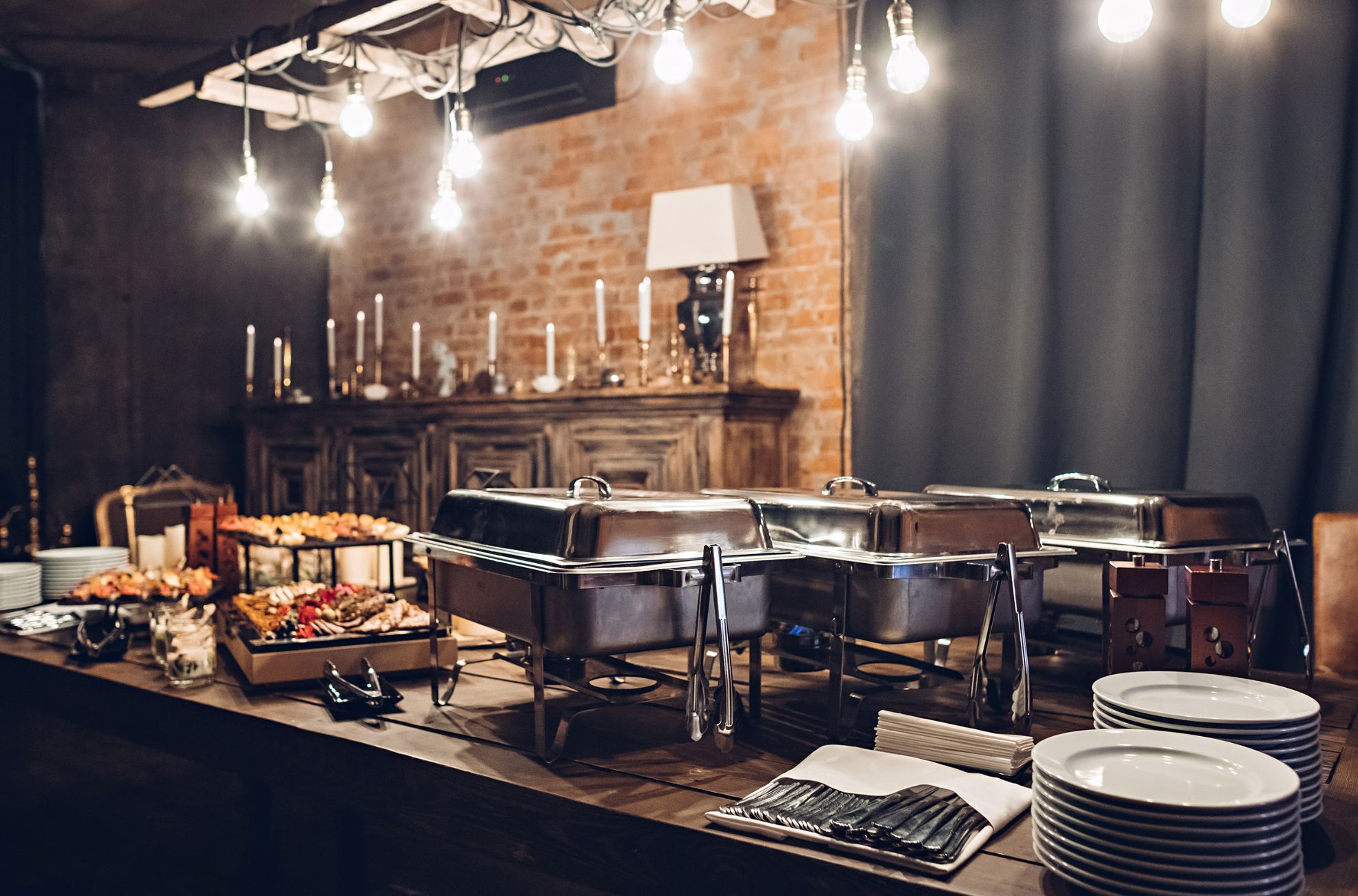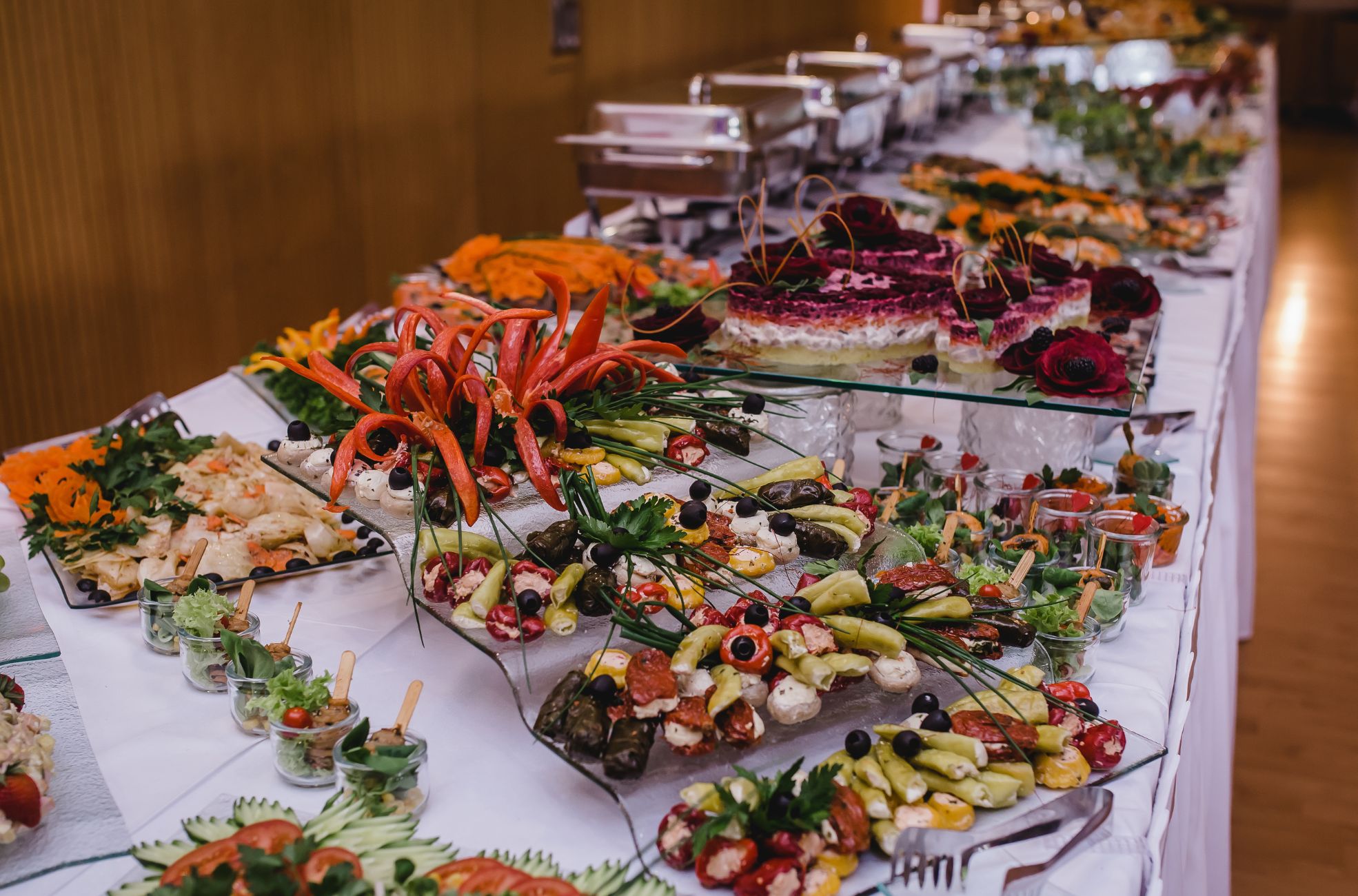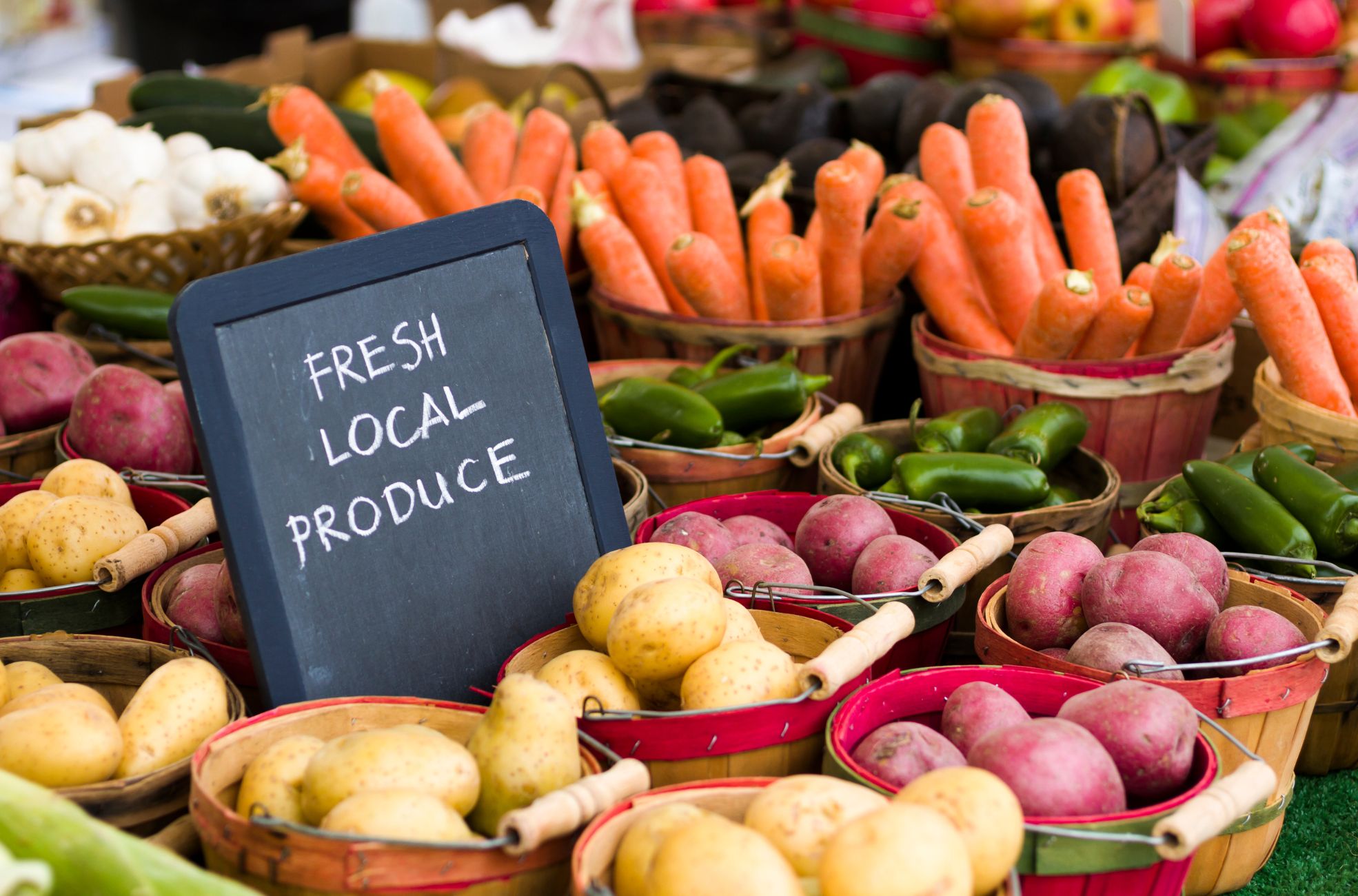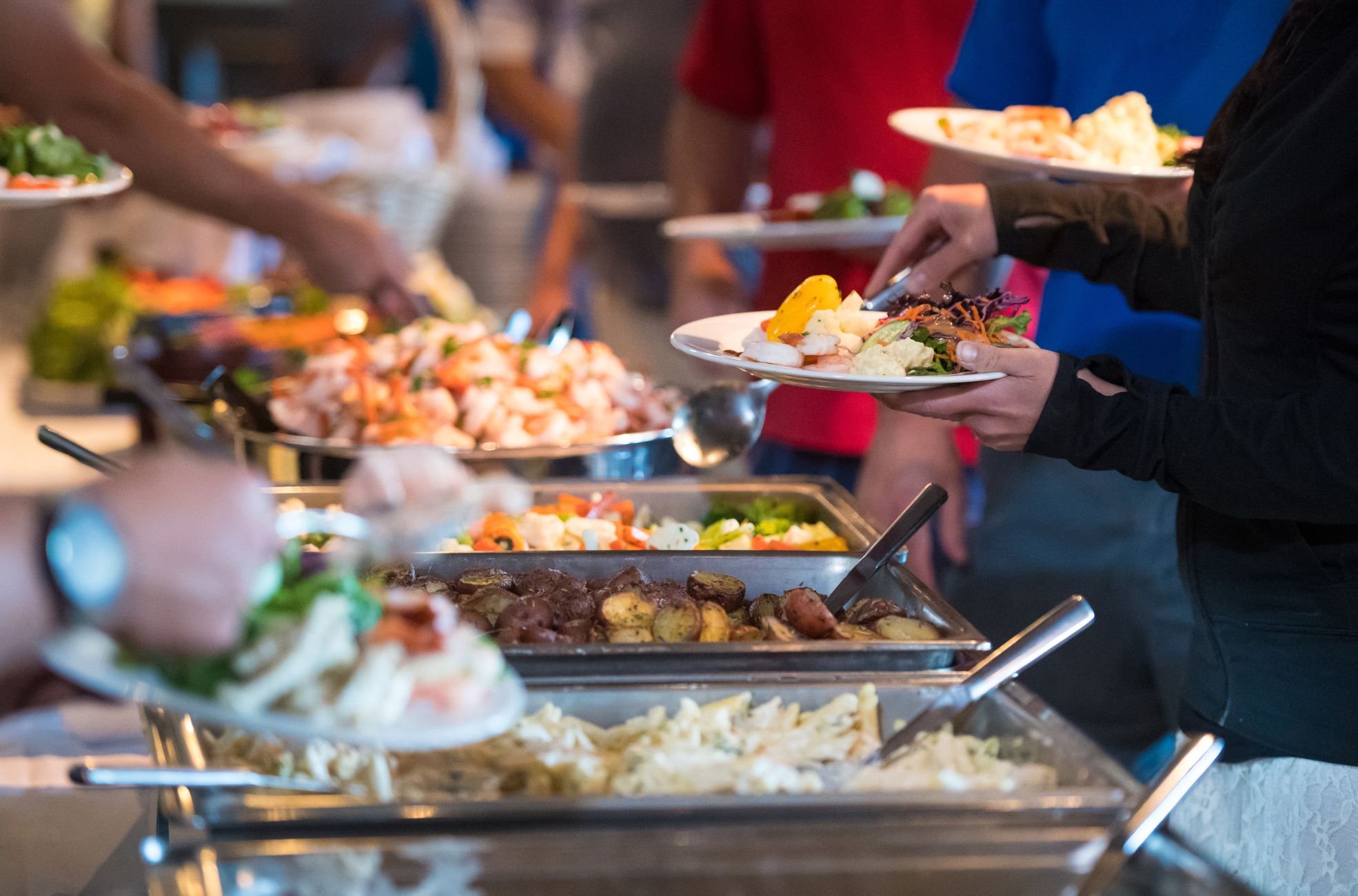Finding cheap catering ideas without skimping on quality is key to successful event planning on a budget. It’s all about finding the perfect balance between delighting your guests and keeping an eye on expenses. We’re here to share practical strategies for creating an affordable yet memorable catering experience, from tapping into local suppliers to embracing DIY decor.
We’ll explain how to accurately estimate guest numbers, choose the right catering style, and plan a menu that maximises value for money. Whether you’re organising a business conference or a social celebration, these tips will help you navigate the complexities of catering, ensuring your event is both cost-effective and enjoyable.
The Basics of Event Catering
Your Event Type and Audience
When planning an event, it’s imperative to distinguish between its nature—whether it’s a business or a social gathering. Each type has its unique requirements and audience expectations. For instance, business catering typically caters to office managers, and professionals who need services for meetings, training sessions, and company events.
These events often demand a more formal approach, with popular choices including box lunches, platters, and buffet-style catering. Conversely, social catering is geared towards personal celebrations like family gatherings, special occasions, and weddings. These events might call for a more personalised touch, focusing on the celebratory aspect of the gathering.
Estimating Guest Numbers Accurately
Getting an accurate guest count is pivotal for the caterer, venue, and overall event planning. Traditional methods like sending RSVP cards with invitations are still in use. Still, you can apply a formula for a quick estimate considering the number of out-of-town and local guests. Corporate events typically see a 60-70% attendance rate.
To ensure accuracy, creating an A-list and a B-list can help manage the final headcount. Keep in mind that about 10% of those who RSVP might not attend, and children should also be accounted for as they require additional considerations. Once you’ve established a general headcount, making informed estimates for food, drink, space, and entertainment becomes easier.
Choosing the Right Catering Style
Selecting the appropriate catering style is essential and should align with the event’s nature and your guests’ expectations. For business events, efficiency and professionalism are key, with a preference for styles that allow for networking and ease of service. Social events may opt for more elaborate styles, such as sit-down dinners or themed buffets, to enhance the celebratory atmosphere.
The choice of catering style will also impact the overall budget and should be considered carefully.
Allocating Budget for Food and Drinks
Budgeting for an event is a multifaceted task that includes considering the costs of the virtual event platform, design, streaming services, hybrid events, and onsite and remote A/V equipment. Revenue avenues such as advertising, concession, booth rentals, management fees, registration, and sponsorship can help cover these expenses. You’ll need an event budget proposal to gain stakeholder approval.
Catering costs can vary widely, with factors such as seasonal fluctuations, venue location, and additional services influencing the price. In Sydney, for example, catering services per person can range from $20 to $40 for basic options, $40 to $70 for standard services, and upwards of $70 for premium offerings.
These figures are indicative and can change based on specific event requirements.

Cost-Effective Menu Planning
Selecting Seasonal Ingredients
Opting for ingredients that are in season can be an economical choice. These options are generally more affordable due to their availability and reduced transportation costs. For example, a winter event could feature root vegetables and pumpkin dishes. At the same time, a summer celebration might highlight lighter fare, such as berries and tomatoes.
By choosing locally sourced produce, you contribute to the local economy and provide guests with the freshest possible ingredients.
Planning a Simple Yet Appealing Menu
Creating a straightforward yet enticing menu is essential. A variety of textures and flavours can create a memorable meal without unnecessary complexity. The event format will guide the menu choices: a range of small bites may be ideal for cocktail receptions. At the same time, plated dinners often include a sequence of courses.
Ensuring that the menu is manageable for the venue’s kitchen is important, as is conducting taste tests to confirm that the dishes meet expectations in flavour and presentation. Selecting dishes that can be served efficiently is necessary for larger gatherings to prevent delays.
Offering a selection of beverages, including non-alcoholic options, can complement the meal. Post-event feedback is valuable for assessing the menu’s success and identifying improvements for future events.
Incorporating Bulk Buying into Menu Design
Purchasing ingredients in bulk can lead to cost savings and contribute to a more sustainable operation by reducing packaging waste. This approach can also help maintain consistency in meal quality and guard against unexpected market changes.
When planning the menu, consider using versatile ingredients that can be purchased in large quantities and utilised across multiple dishes to maximise savings.
DIY Options vs. Professional Caterers
Deciding between self-catering and engaging professional services involves a cost-benefit analysis. While professional caterers offer convenience and expertise, they may come at a higher cost. For those with budget constraints, self-catering with simple menus such as brunch items, boxed lunches, and finger foods can be more economical.
Offering vegetarian options and limiting alcoholic beverages to wine and beer can also help reduce expenses. Opting for a family-style service with communal platters can create a cosy atmosphere and save on labour costs. The decision should consider the event’s scale, the organiser’s culinary capabilities, and the available budget.
Some caterers offer economical menu options for clients with budgetary limitations, balancing DIY and full-service catering.

Leveraging Local Suppliers and Resources
Sourcing Locally for Freshness and Savings
Partnering with nearby suppliers can elevate the culinary experience at your event. Their close location ensures that produce such as fruits and vegetables arrive in peak condition, preserving their flavour and nutritional content.
Chefs can use the freshest picks to craft dishes that highlight the season’s offerings. Local sourcing can also be beneficial economically. Reduced shipping distances and the absence of import tariffs can help manage your budget more effectively, and establishing a regular purchasing pattern may lead to cost reductions for bulk orders.
Building Relationships with Local Vendors
Fostering connections with area vendors goes beyond mere purchasing; cultivating a dependable network is necessary. These vendors can often adapt quickly to caterers’ fluctuating demands, providing timely deliveries of necessary products.
Consistent in-person interactions ensure that any quality issues can be addressed promptly. This rapport can evolve into collaborative efforts, such as menu development, where vendors suggest ingredients that could inspire innovative dishes or align with seasonal menus. By nurturing these connections, you bolster the local economy and enhance your reputation as a business that prioritises quality and community engagement.
Utilising Community Spaces for Events
Selecting community venues can be advantageous for events, offering affordability and a sense of local authenticity that resonates with guests. These spaces may already have ties with area suppliers, which can simplify the planning process and potentially offer cost benefits through established contacts or negotiated rates.
Borrowing or Renting Equipment Locally
Local rental services provide a practical solution for infrequent equipment needs. This strategy is cost-effective and environmentally conscious, as it reduces the need for storage and upkeep of seldom-used items.
These companies often offer delivery and collection services, which can alleviate the logistical burden on event organisers. Renting locally allows for flexibility, ensuring that each event is equipped appropriately without the financial burden of purchasing and maintaining the equipment.

DIY Decor and Setup Techniques
Creating an Effective Layout for Food Stations
Designing the buffet setup is required for guest convenience. To minimise overcrowding, consider a design that allows access from multiple points. For larger gatherings, a central buffet that can be approached from all sides will expedite the serving process. In contrast, a single-sided buffet may be more practical in confined spaces. A circular setup can also encourage fluid movement among attendees.
Elevating dishes on the buffet can enhance visual interest and practicality. Place the taller items towards the rear and lower ones in front to mitigate spillage risks. Organise the buffet with a defined beginning and end, situating plates at the start and cutlery and napkins at the conclusion to streamline the flow.
Simple and Attractive Table Setting Ideas
Carefully curated table settings can significantly contribute to the event’s aesthetic. Reflect on the desired mood and select a colour palette that aligns with your theme. Incorporating cost-effective decorative elements like artificial greenery or thematic objects can enrich the setting. For illumination, consider unscented candles to add warmth without interfering with the aroma of the cuisine.
Opt for the highest quality disposable tableware that fits your budget. Elegant disposables can elevate the dining experience while still aligning with your event’s style. Attention to the presentation of your buffet will leave a positive and lasting impression on your guests.
Eco-Friendly Decorations and Utensils
Incorporating sustainable practices into your event can enhance its image. Select biodegradable wooden utensils that can be personalised with a stamp to add a distinctive touch. These are preferable to plastic and demonstrate environmental consideration.
Decorate with natural materials that are economical and eco-conscious. Seasonal items like pinecones, petals, or twigs can create an attractive and responsible setting.
Tips for Self-Service Arrangements
Efficiency and clarity are paramount for self-service setups. Ensure all dishes are clearly labelled, especially those catering to specific dietary needs or containing allergens. Labels should be easy to read and can be designed to fit the theme. Position serving utensils on small plates near their corresponding dishes and use a drip-catching plate beneath beverage dispensers.
Strategically place limited-quantity items towards the end of the buffet to encourage moderate portion sizes. Group related items together for ease of service. To maintain tidiness, waste receptacles should be situated at a suitable distance from the food area yet within convenient reach for guests. For high-volume dishes, provide additional serving tools to avoid lines and keep the experience pleasant for everyone.

Stress-Reducing Strategies for Event Day
Preparing a Detailed Catering Checklist
A thorough catering checklist is essential for ensuring a smooth event. This list should encompass all details from your vendors, such as food types, quantities, arrival times, and specific instructions pertinent to your event’s theme. A well-prepared checklist guarantees that your requirements are clear and facilitates effective communication with your suppliers.
Initiate this process well in advance to allow ample time for vendor research and selection that aligns with your event’s objectives and budget. After finalising your choices, solidify your agreements with an email that encapsulates all pertinent details, providing a handy reference for both you and the vendors.
Coordination Tips Among Various Suppliers
Synchronising your suppliers is critical for a successful event. Establish clear communication with each one and encourage a pre-event meeting if working with an event planner. This step ensures that everyone understands their responsibilities and the event’s logistics.
Clear communication about your expectations, deadlines, and each supplier’s role is essential. A week before the event, send a confirmation email to reiterate these details. This proactive measure helps to avoid misunderstandings and promotes a cooperative atmosphere.
Time Management on the Day of the Event
Effective time management is crucial for event success. Develop a detailed schedule that outlines all tasks and designates them to team members, covering every facet of the event. Allocate realistic timeframes for each task, especially those that are more complex or less familiar.
Being adaptable to last-minute changes is also crucial. By delegating responsibilities, you can concentrate on managing the event as a whole. It’s important to minimise distractions and take care of your well-being to stay sharp and energised.
Debriefing and Quick Problem-Solving Approaches
Challenges are inevitable, but a proactive, solution-focused approach can lessen their impact. Form a team dedicated to resolving issues, equipped to think on their feet and act decisively. When confronted with a problem, maintain composure and employ creative thinking to find effective resolutions.
Consider the advantages and disadvantages of each solution before taking action. Anticipate potential issues and prepare backup plans. Should a complex problem arise, don’t hesitate to seek support from your network.
A positive outlook and resourcefulness are invaluable for managing the intricacies of event coordination.
Streamlining Your Event Success
Embarking on the event planning journey with these low-cost catering strategies opens the door to a truly memorable and stress-free occasion. By understanding your audience, selecting the right catering style, creating a cost-effective menu, and sourcing locally, you can elevate the experience by staying within your budget. DIY solutions, combined with the flair of professional inputs where needed, will keep your guests delighted and your event on track.
Remember, success lies in the details – fine-tuning your planning process, embracing local resources, and adopting a resourceful approach to challenges will ensure your event runs smoothly. With these tips in mind, you are now well-equipped to host a remarkable event that resonates with your guests and reflects your commitment to quality, community, and sustainability. Let the festivities commence!







